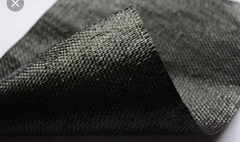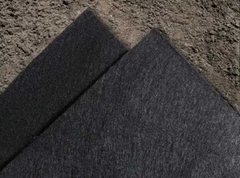![]()
![]()
![]()
Use LEFT and RIGHT arrow keys to navigate between flashcards;
Use UP and DOWN arrow keys to flip the card;
H to show hint;
A reads text to speech;
38 Cards in this Set
- Front
- Back

|
Gabion Basket |
|
|
A retaining wall that relies on it's own mass and setback for stability |
Gravity wall |
|
|
A retaining wall that combines wall mass, set back, and tiebacks reinforcement such as geogrid |
Reinforced wall |
|
|
Batter |
Angle created by wall setback |
|
|
Clay bearing capacity |
2500lbs per square foot |
|
|
Sand bearing capacity |
4000 lbs per square foot |
|
|
Excess loads and or weight that may be present above a retaining wall |
Surcharges |
|
|
2 types of drainage |
Surface Subsurface |
|
|
The biggest opposition for retaining walls |
Water |
|
|
Drains behind walls should be daylighted how often? |
Every 50ft |
|
|
What type of stone material is recommended behind all retaining walls? |
3/4 inch Drainage stone |
|

|
Woven geotextile |
|

|
Non woven geotextile |
|
|
Minimum crushed stone base in our climate |
6 to 8 inches |
|
|
How thick should lifts be when preparing your base? |
3- 4 inches |
|
|
Compaction should reach __% proctors density |
95% |
|
|
How is proctor density measured? |
Nuclear density gauge |
|
|
Prepped Base of retaining wall should be how wide and how thick? |
24inches wide 6-8 inches thick |
|
|
What type of pipe should be used for drainage behind a retaining wall? |
4 inch perforated pipe |
|
|
Minimum grade for drainage |
1% |
|
|
Rule of thumb to determine how much of the base block should be buried |
1 inch buried for every foot of height |
|
|
When beginning to place base course of a wall, where is the best place to start? |
Lowest elevation |
|
|
How far back from the wall should drainage be installed? |
Minimum 12" |
|
|
Consolidation zone behind a wall |
3 feet distance behind a wall that no machines are allowed to drive on |
|
|
In a drystone wall, what should the largest stones be used for? |
Foundation stones |
|
|
Top stones on a drystone wall |
Copestones |
|
|
In a dry stone wall, these longer stones act as tiebacks |
Through stone |
|
|
In a dry stone wall, these are strategically placed filler pieces between large stones. |
Harding |
|
|
Ideally through stones should be placed no further than ___ apart |
1 meter |
|
|
The ends of a dry stone wall |
Wall head Cheekend |
|
|
Supporting structure behind a wood retaining wall. Buried underneath backfill once the wall is finished. |
Tieback. Deadman is attached to the end of the tieback |
|
|
What should be done to the first row in a wood retaining wall to ensure it remains secure? |
Hammer 2' lengths of rebar into pre drilled holes |
|
|
How much batter should there be when installing a timber retaining wall? |
1/2" to 3/4" |
|
|
What size galvanized spikes should be used to secure the lower courses of a timber retaining wall? |
10" galvanized |
|
|
These are timbers that are placed perpendicular to the wall and secured to the wall with spikes |
Tiebacks |
|
|
How often should a tieback be installed when adding courses to a wall? |
On the second course, and every other course after that |
|
|
How far apart should tiebacks be spaced apart? |
8' 2.5m |
|
|
How long should a tieback be? |
Equal to,or greater than the height of the wall |

